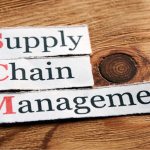Executive Summary
-
Discover key strategies to reduce carbon footprint effectively by 2025.
-
Learn how sustainable supply chain innovations are reshaping global markets.
-
Identify risks and challenges associated with carbon reduction efforts.
-
Explore expert insights and tools for implementing green practices in your business.
-
Real-world case study of a company successfully reducing its carbon footprint.
Introduction
In today’s rapidly evolving global market, businesses face increasing pressure to adopt sustainable practices. Reducing carbon footprints has become a critical objective, not just for environmental reasons, but also for competitive advantage. As we approach 2025, companies must integrate innovative strategies to minimize their carbon emissions. This article explores effective carbon footprint reduction strategies, highlighting their importance for investors, founders, and corporates. By the end of this read, you’ll understand key methods, benefits, and challenges, along with actionable insights to help your business embark on a sustainable journey.
Definitions / Context
Carbon Footprint: The total amount of greenhouse gases (GHG) emitted directly or indirectly by an individual, organization, event, or product.
Sustainable Supply Chain Innovations: Practices and technologies implemented to minimize environmental impact throughout the supply chain, from raw material sourcing to product delivery.
Benefits / Pros
-
Cost Savings: Implementing energy-efficient practices can reduce operational costs.
-
Brand Image Enhancement: Companies committed to sustainability are favored by consumers and investors.
-
Regulatory Compliance: Proactively reducing emissions aligns with increasingly stringent environmental regulations.
-
Competitive Advantage: Early adoption of green practices sets companies apart as industry leaders.
Risks / Cons / Challenges
-
Initial Investment Costs: Sustainable technologies require upfront investment.
-
Supply Chain Complexity: Integrating green practices can complicate existing processes.
-
Regulatory Changes: Constant updates to environmental laws may require continuous adaptation.
-
Market Perception: Missteps in sustainability efforts can lead to negative publicity.
Step-by-Step Process
How to Implement a Carbon Footprint Reduction Strategy:
-
Conduct an Emissions Audit: Identify sources of emissions within your operations.
-
Set Clear Objectives: Define specific, measurable goals for emissions reduction.
-
Innovate Supply Chain Practices: Integrate renewable energy sources and eco-friendly materials.
-
Engage Stakeholders: Involve employees, suppliers, and customers in sustainability initiatives.
-
Monitor and Report Progress: Use digital tools to track emissions and report achievements.
EcoTech Ltd., a leading tech manufacturer, reduced its carbon footprint by 40% within three years. By transitioning to renewable energy and optimizing logistics, they not only met regulatory requirements but also boosted their market appeal. This strategic shift attracted new investors and increased customer loyalty.
Sustainable Success at EcoTech Ltd.–
Expert Tips / Strategic Insights
-
Epiidosis recommends adopting a circular economy approach, focusing on resource efficiency and waste reduction.
-
Stay updated on government incentives for sustainable practices, which can offset initial costs.
-
Collaborate with industry peers to share best practices and innovations.
Tools / Resources / Calculators
-
Carbon Footprint Calculator: A tool to estimate your company’s emissions and identify reduction opportunities.
-
Sustainable Supply Chain Checklist: A comprehensive guide to greening your supply chain.
-
Renewable Energy Estimator: Calculate potential savings from solar or wind energy investments.
Conclusion
Reducing your carbon footprint by 2025 is not just a regulatory requirement but a strategic opportunity. By adopting innovative strategies, businesses can achieve sustainability goals while gaining a competitive edge. The insights and tools provided can guide your journey toward a more sustainable future. Speak to our advisors for a tailored plan to integrate green practices into your operations.






















